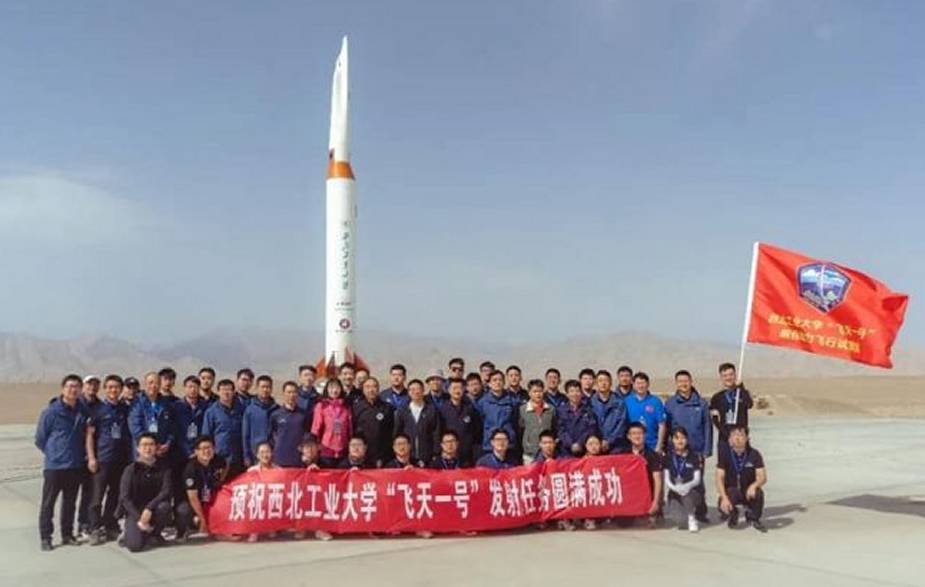China tests Feitian-1 hypersonic missile with transforming engine
According to Lia Wong on Overt Defense, on July 4, 2022, the Feitian-1 hypersonic vehicle developed by the School of Aeronautics and Astronautics of Northwestern Polytechnical University successfully launched at a base in northwestern China, demonstrating for the first time in the world an operational kerosene combined cycle ramjet/rocket engine capable of smooth transition between at least four different propulsion configurations, which allows for efficient operation in every phase of flight and expanding the flight envelope of future Chinese hypersonic aircraft.
Follow Army Recognition on Google News at this link

Feitian-1 hypersonic test vehicle (Picture source: School of Aeronautics and Astronautics of Northwestern Polytechnical University)
As written by Lia Wong, the test vehicle appears to be a wave rider design, optimized to generate lift from the shockwaves it generates at high Mach numbers for flight, similar to the Boeing X-51 research vehicle previously used by the U.S. Air Force. Owing to the ramjet engine’s lack of need to carry oxidants, the Feitian-1 and future Chinese systems developed from Feitian’s technology are more lightweight than current boost-glide weapon systems such as the USAF’s AGM-183 ARRW, allowing more room for fuel or a larger payload to be carried, increasing the vehicle’s lethality.
The transforming engine, designed to widen the vehicle’s flight envelope, may also allow the vehicle to fly under its own power sooner after launch, with this reduced need for power and size from the initial booster, we may also see the pre-launch cost reduce and the scaling up of hypersonic missile production within China.
Current developing turbo-ramjets promise to bring many more advancements to the table, such as zero-speed start, even higher efficiency, longer range and reusability, Lia Wong writes. At these missiles’ operational speeds, there is often little time for an adversary to detect and intercept. Potentially nuclear-armed, an adversary which lacks an equally advanced defense system could face catastrophic results, Lia Wong comments. With Japan and South Korea developing their own hypersonic weapons and the U.S. Navy planning to install hypersonic missiles on its’ three Zumwalt-class destroyers, further research into hypersonic weaponry by Chinese regional powers is sure to continue.


























